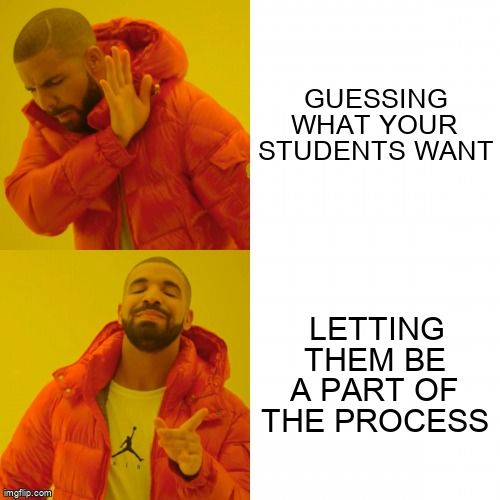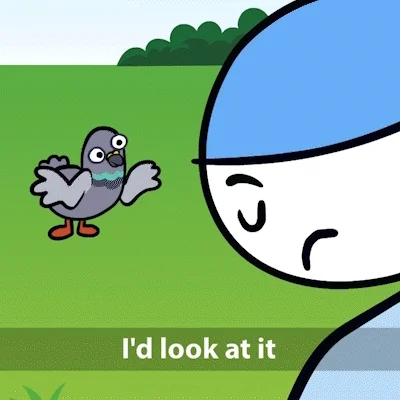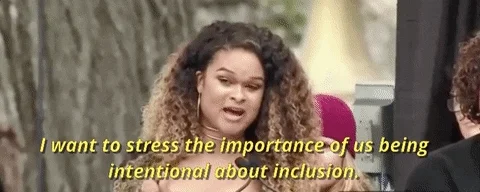
This logo isn't an ad or affiliate link. It's an organization that shares in our mission, and empowered the authors to share their insights in Byte form.
Rumie vets Bytes for compliance with our
Standards.
The organization is responsible for the completeness and reliability of the content.
Learn more
about how Rumie works with partners.

Are your students getting tired of the same old thing?
Engaging modern learners requires teachers to not only refresh the content or their courses but include lots of options for learners to demonstrate what they know and can do.
Consider this:
Research demonstrates that engaging students in the learning process increases their attention and focus and motivates them to engage in higher-level critical thinking.

Adopting a student-centered approach to instruction increases opportunities for student engagement, helping everyone be more successful. It's worth it!
1. Refresh The Actual Content

It's important to stay updated on changes in the field or subject area you're teaching.
For example, scientific discoveries, the evolution of spoken language, or changes in digital tools can quickly make once useful content obsolete.

Simple steps to refresh content:
Make sure you scan all your content periodically.
Locate the information that is or seems outdated.
Replace the outdated content with current information from trusted sources.
Did you know?
2. Re-engage Learners
Increased learner engagement means higher achievement. Turn to the learner and let them decide.

 Refresh your teaching strategies. Try new approaches to re-engage your learners and let the learners decide how to demonstrate what they know and can do.
Refresh your teaching strategies. Try new approaches to re-engage your learners and let the learners decide how to demonstrate what they know and can do.
 Start with interesting facts and surprising stories.
Start with interesting facts and surprising stories.Generate enthusiasm — it's contagious!
Encourage meaningful connections between course material and real-life situations.
Keep in mind short attention spans.
Recognize different learning preferences and intelligences — not everyone is a visual learner, for example.
Turn lessons into games — competition can be collaborative!
Turn lessons into stories — flip the perspective and let the learner tell you their story.
Offer choices — this gives the learner control and investment in the course.
3. Recognize Diverse Learning Needs
Since each learner has their own learning preferences, consider adding new and different activities to re-engage a wide variety of learners.

It's possible to include more and diverse learning demonstrations as part of your content refresh. Ask yourself: how do your activities address a variety of learning needs?
auditory/linguistic/musical
visual/spatial
bodily/kinesthetic
interpersonal/intrapersonal
logical/mathematical
Learning needs may also differ depending on cultural backgrounds and cognitive abilities. Make sure you differentiate activities so that all learners can stay engaged.
Refreshing Course Content in Action

Meet Naja. She just finished teaching her first semester of high school English. At the end of semester survey, she got the following feedback from her students:
"We spent a lot of time sitting at our desks."
"All the assignments were essays."
"The poems and books we read were really old and boring."

Naja is considering these ideas to re-engage students for next semester:
A: Change the essay topics.
B: Give students a variety of options for the final assignment.
C: Take students on a literary scavenger hunt in the local public library.
D: Let students choose a current book to report on.
Quiz
Which of the above will help Naja successfully refresh the course? Select all that apply:
Students have expressed the need for more variety. Letting them engage with more current material and choose different assignment types will give them a stronger sense of agency and interest in the class. Engaging in activities like scavenger hunts will help meet a variety of learning needs. Changing the essay topics might help a little but it won't address wider issues with the course.
Take Action

Take the time to refresh your content. It's worth it!
Find ways to re-engage learners with the addition of refreshed teaching strategies and learning styles.
This Byte has been authored by
Stacie Fieth
Director, Global Education Services
Ioanna Kyprioti
Educational Programs Manager - JA Greece
Linda Volane
Project manager
Matias Agustoni
Project manager
Oorvashi Panchoo
Senior Project Officer